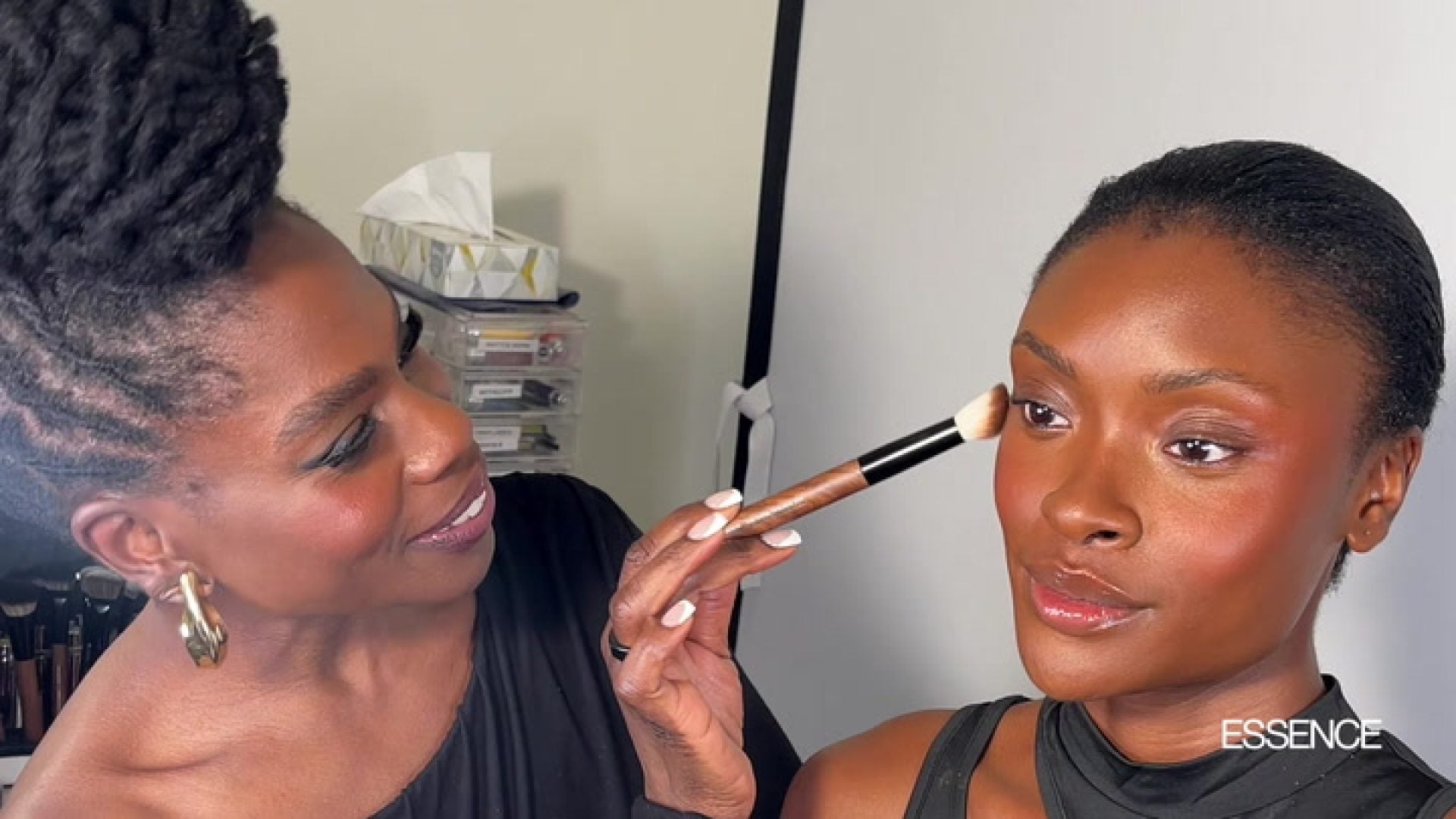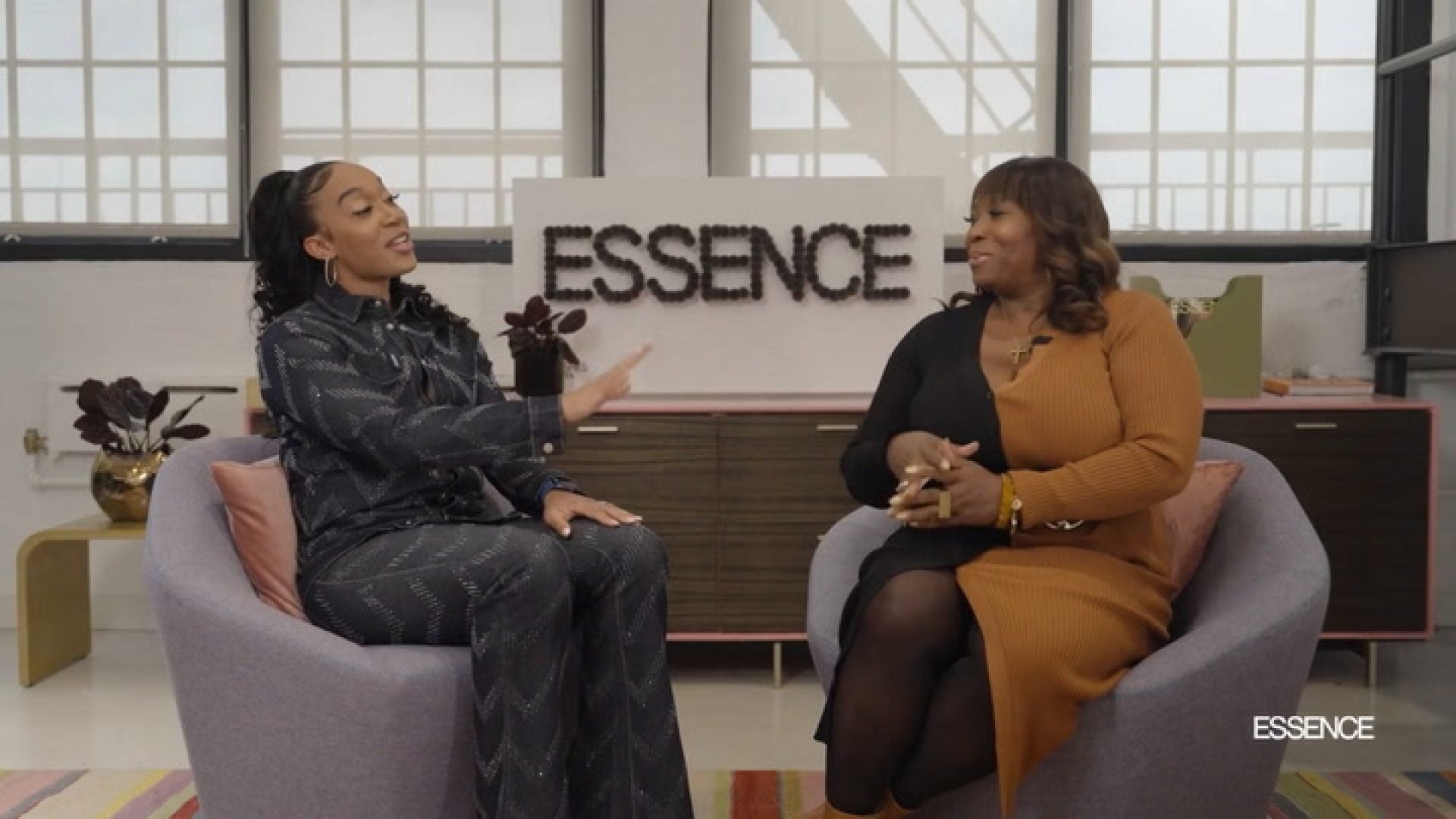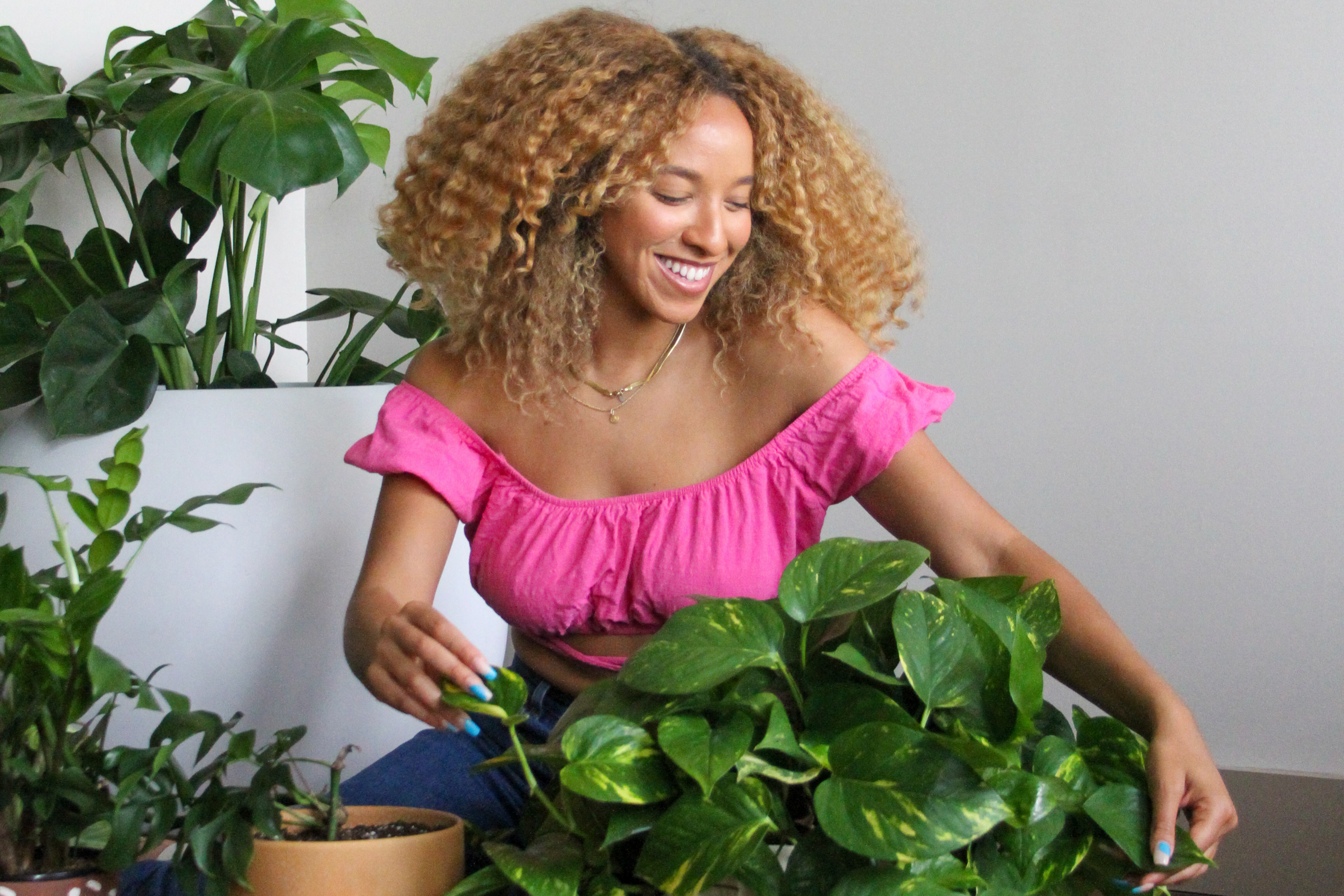
After moving to New York for grad school, plant stylist and curator Maryah Greene decided to deck her first “big girl” apartment out with lush houseplants. But as time went on, she began to notice that her Bed-Stuy pad wasn’t a conducive environment for her plants to thrive. “They all just died on me,” she tells ESSENCE.
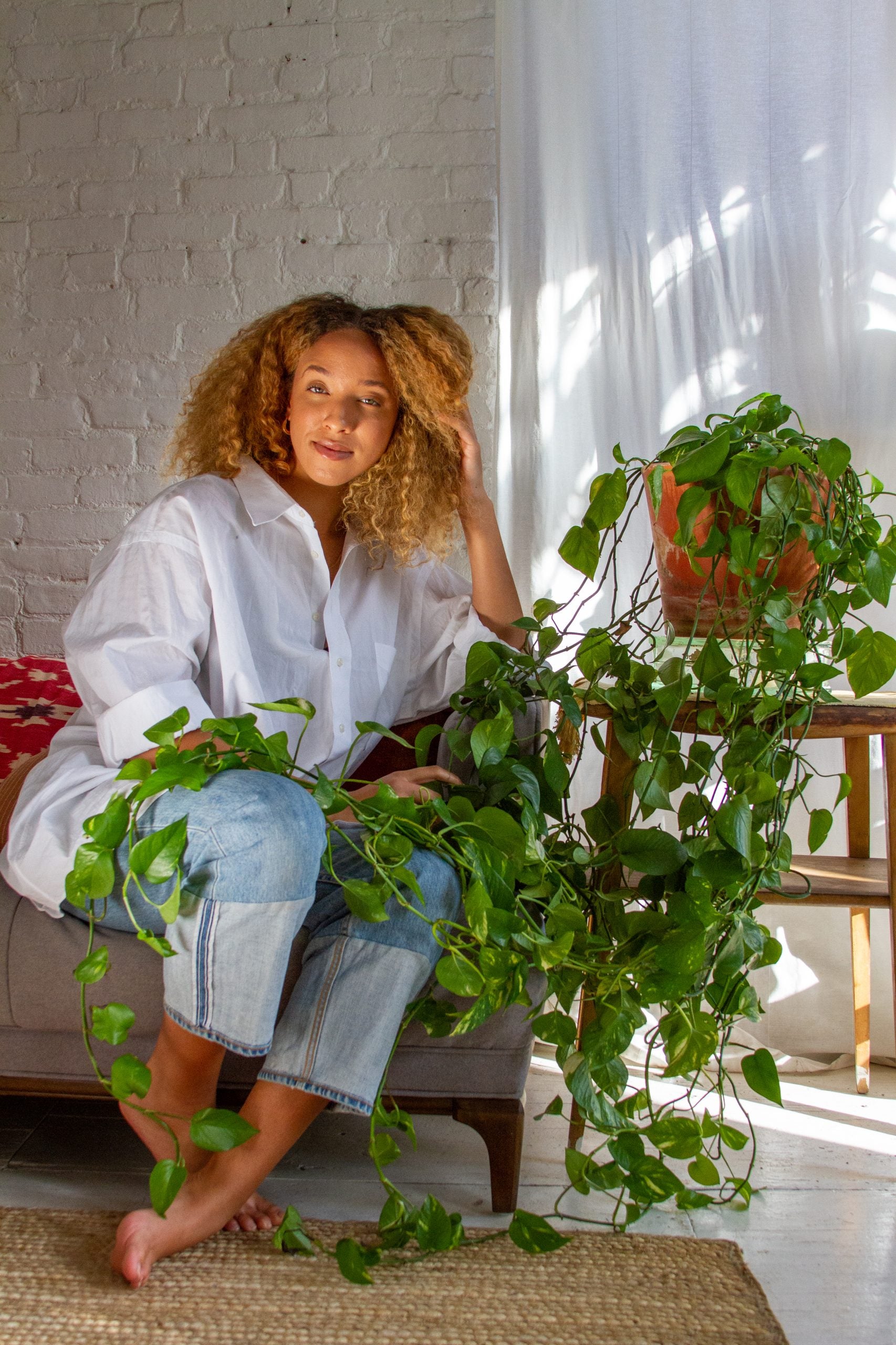
Frustrated by the short life span of her plants, Greene began to test out different watering and care methods that could nurse her plethora of greenery back to life. What she came to find was that it wasn’t her lack of having an inherited green thumb that was keeping her from living her best plant mom life, but that she just needed to explore through trial and error what each of her plants needed to flourish.
“Everyone has this notion that you either have a green thumb or you don’t; that it’s a skill you develop over time or it’s just something that you’re innately born with,” she shares. “But I like to profess the idea that it depends on the right plants that you have for your space. It’s all about tailoring the ones that you’re bringing into your home to your lifestyle, lighting, and aesthetic because that will make or break the experience you have with plants.”
The self-described “plant doctor” and founder of the plant consulting firm, Greene Piece, provides indoor plant styling, diagnostic assessment, and custom care plans for the plants in your life. Greene has also teamed up with zero-waste company superzero for a new limited edition Greene Releaf Hand Care Set, with 10 percent of all sales to be donated to Camping To Connect, a non-profit that’s promoting leadership and positive self-awareness in young men of color through peer learning and outdoor education.
We spoke to the greenery guru about ways to pick the best plants for your space, how plants can improve your well-being, and why you don’t need to have a green thumb to be a plant mom (or dad).
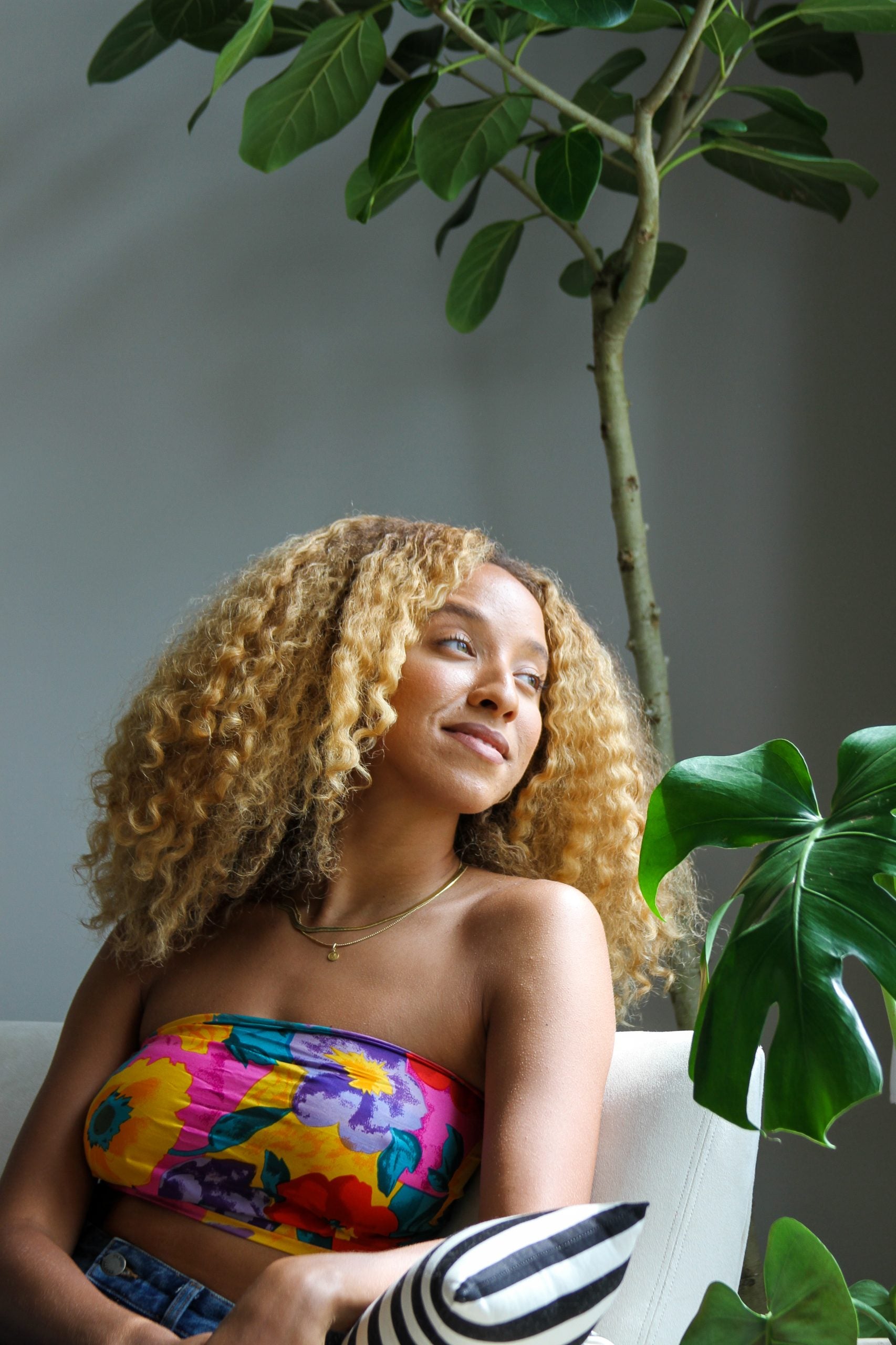
How houseplants can improve your overall well-being:
I find that if you’re going to get any benefit out of caring for your plants, you want it to be minimally stressful. The wellness and emotional benefits of having plants come in when you have your schedule. It means waking up to make your coffee and watering your Monstera plant. Or checking in on your Paella plant during your lunch break to see if any new leaves have come in. It’s those really small moments that you’re able to check in on your plants and your own personal growth. They serve as like physical reminders.
Choosing the right plant to start your plant mom journey with:
Go smaller than you think you need. Plants grow and if they’re growing, the foliage is growing, so you can imagine the roots are also growing at the same speed and you’re going to have to repot that pretty soon. You want to start a bit smaller than you think because that [plant] is only going to get bigger and the pot size is going to expand as well.
Sharing your plants with friends and loved ones:
I like to recommend plants that are easy to propagate. Cutting a piece off, putting it in water, and allowing it to root, then you can plant it into another pot. I love those because you can share them with friends and family or cut the plant into pieces and grow other ones to have different variations of that plant throughout your house.
Choosing the best low-maintenance plants to get started with:
My favorites are any sort of pothos plants. Another favorite of mine is the Monstera deliciosa. I find that people really enjoy that one as a beginner because you get the gratification of getting one that doesn’t have any holes in the leaves. As it begins to mature, you get more and more holes in the leaf. Another favorite of mine is a Bird of Paradise; it’s that big banana leaf-looking plant, for those who are looking for a statement plant. It looks like a sculpture in your home.
Why you shouldn’t give up on trying to be a plant mom:
One of the reasons why I know how to take care of plants is because, at one point, I killed them. There’s a reason why I feel completely confident charging people money for this service. It’s because I know I’ve done all of the mistakes that you could possibly think of.
You bought [your plant] with good intentions because you wanted to care for and love something. But you’re literally taking a tropical plant that was growing in South America and bringing it home to your apartment in Bed-Stuy that has north-facing light that’s next to a radiator. You work eight hours a day and you water it whenever you find the time. You’re essentially taking this plant from its natural habitat and trying to get it to fit your life, so you’re both kind of struggling here. You might not be in love with the plant and it honestly might not love you. And that’s okay. It’s about making sure that it’s a good fit over time and that you have the right fit for your home.
Why plants serve as the best companions during life transitions:
One of my favorite things to share with my clients and everyone in my life is: whenever you have a big life moment, whether it’s the happiest or the saddest, get yourself a plant. It serves as a physical reminder that even though that day was really hard, this plant has grown, it’s still alive and so are you.”

